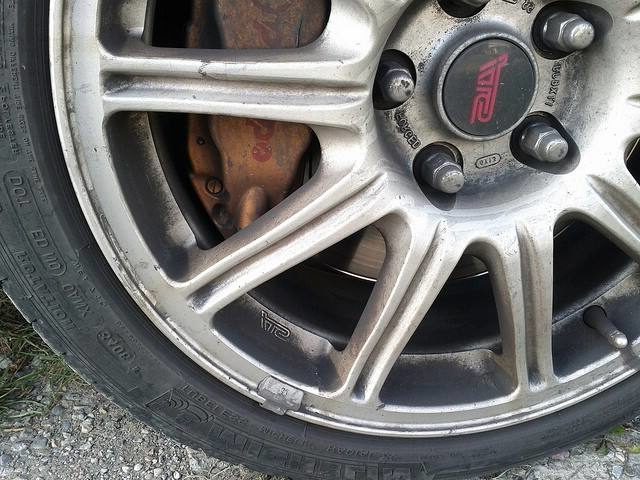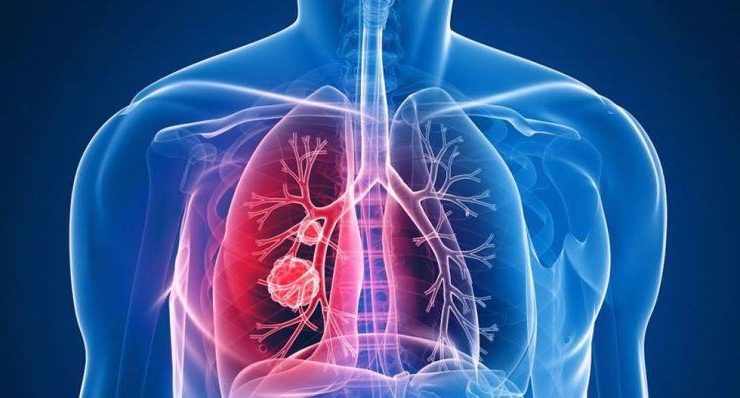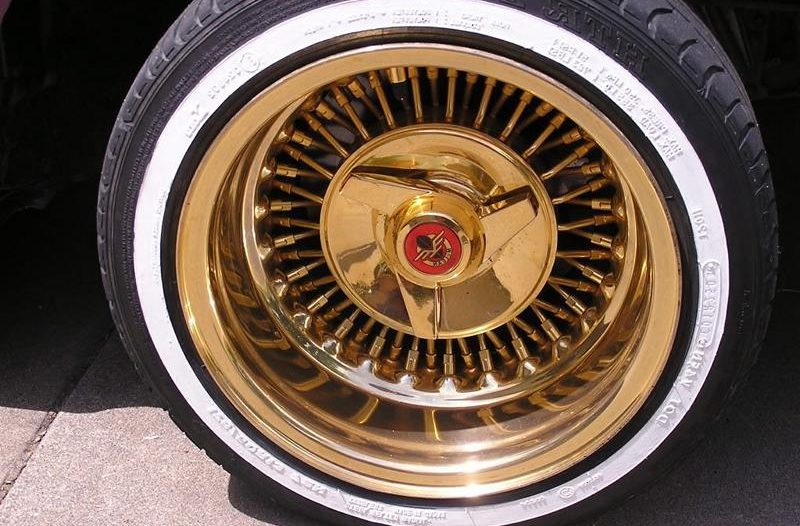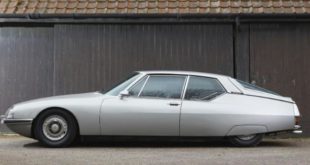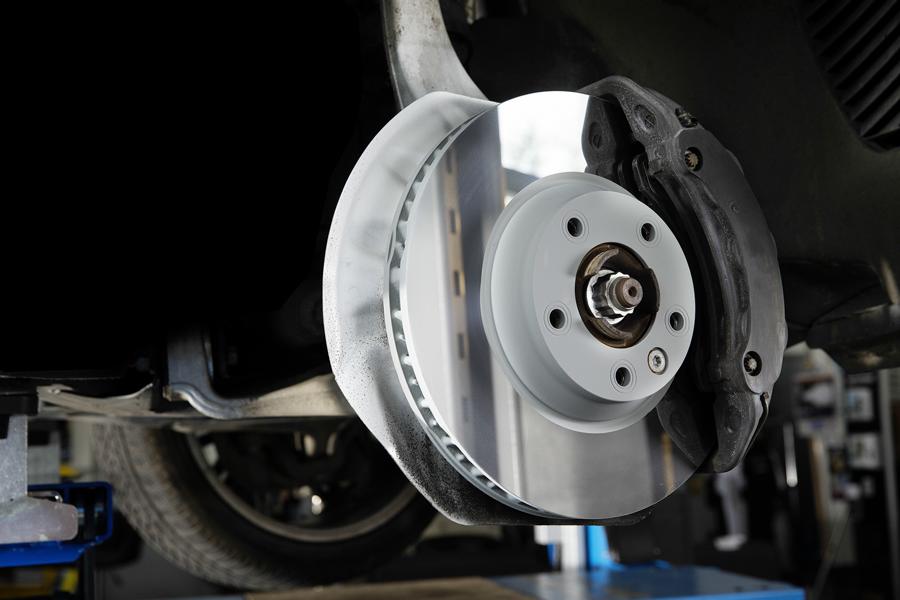
For most drivers, top speed, horsepower and of course price are the most important purchase criteria. In addition, particulate emissions and CO2 and NOX emissions should also play a major role when deciding on a new vehicle. Exhaust gas cleaning has improved a lot in many vehicles in recent years. However, it is still ignored how much fine dust is created by the abrasion of tires and brakes.
Particulate matter from road traffic
According to the Federal Environment Agency, around 2016 tons of particulate matter were measured in Germany in 203.000. That is a lot, but 25 years ago it was twice as high. But it's still too much! The fine dust is generated by industry, agriculture, power generation, heating and vehicles. But road traffic is also responsible for around 30.000 tons of fine dust each year. A good half of the particulate matter (13.980 tons) was caused by tire and road abrasion and another quarter (7.340 tons) by the abrasion from brake pads. "Only" around a quarter (7.740 tons) of the measured 30.000 tons of fine dust are caused by the exhaust gases. from the engine. Some studies even assume up to 15.000 tons of fine dust from the brake system per year. However, an exact specification is hardly possible in the area of fine dust. This is mainly due to the fact that the amount of abrasion is massively influenced by the vehicle weight, the braking force and of course the driving speed.
Fine dust puts a strain on the circulation and the lungs
Particulate matter particles are measured in micrometers (µm). This value indicates the size of the granules. The designation PM10 means that the fine dust measures a diameter of less than ten micrometers (µm). These are already dangerous particles. Larger fine dust particles, on the other hand, can be stopped by mucus and fine hairs when inhaled. Particles with the designation PM2,5 are even worse. This is a sub-category of PM10. The fine dust particles are much smaller than 2,5 µm. These particles cannot be stopped when inhaled and penetrate deep into the lungs. If the particles are even smaller, they can even get into the bloodstream.
How can fine dust emissions be reduced?
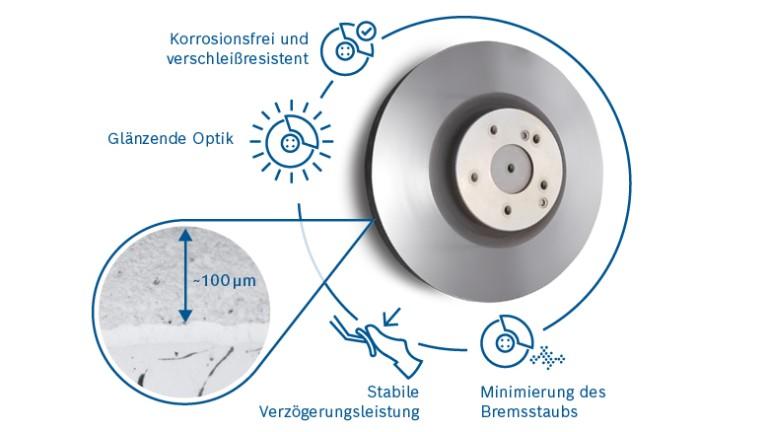
Improved exhaust gas cleaning can improve the exhaust emissions of fine dust in modern cars. Although the number of vehicles has increased since the 90s, a quarter less particulate matter can be measured today. This is a real step forward as we think! But it is difficult to reduce road and tire wear. Almost nothing has happened here in recent years. After all, one of the most important properties of tires is grip. It serves driving safety. Reduced abrasion would automatically worsen braking and driving performance. So what to do? Start elsewhere!
Novel brake discs improve abrasion
The brakes look a lot better. The manufacturer Buderus Guss GmbH as a company of Robert Bosch GmbH has launched a product on the market that can reduce fine dust abrasion. The iDisc is a brake disc with a tungsten carbide coating. This material is a hard ceramic and is also used in the tool area. Incidentally, in ballpoint pens, the balls also consist of tungsten carbide. When braking, the fine dust abrasion with such an iDisc brake disc can be reduced by up to 90% according to the manufacturer. Another advantage is that the brake discs last much longer.
currently iDisc's still have their price
A minor disadvantage is that the coating process is expensive and complex. But something revolutionary has been created that currently only has the high price as a problem. But that should be a solvable task in the future. This was also seen in the Federal Ministry for Economic Affairs and Energy and awarded the iDisc the German Innovation Award in 2018. The technology is currently being used in series by a manufacturer. Anyone who buys a Porsche is familiar with the product from the configurator as the Porsche Surface Coated Brake (PSCB). The brake disc is used as standard for the more powerful Taycan, Cayenne and Macan models. If all vehicles used this new brake disc, the particulate matter problem could be solved. In large cities like Stuttgart, more than half of the particulate matter comes from road traffic.
By the way: "Langlet" from Ludwigsburg is a specialist in surface technology. The company now wants to make the super coating significantly cheaper. The aim is to achieve this with a new process that applies the coating to the brake disc at high speed shoots up, The durability of the surface treatment is said to be improved even further. However, 150 € still have to be planned for "JE" brake discs. And for the tuner, switching to the iDisc could be worthwhile. A major advantage of the coating is that the rims are less soiled due to the reduced abrasion.
We hope that you the info report on the topic / term IDISC (further names / keywords: tungsten carbide brake disc, surface coated brake, PSCB, particle brake, fine dust brake) from the field of autotuning. Our goal is that the largest German-language tuning dictionary (Tuning Wikipedia) and to explain tuning terms from A to Z easily and understandably. Almost every day we expand this lexicon and how far we are, you can HERE see. Soon the next one will be Tuning scene concept be illuminated by us. By the way, you will be informed about new topics if you have ours Feed subscribe to.
Below are a few examples from our tuning lexicon:
But of course tuningblog has countless other articles on the subject of cars & car tuning in stock. Do you want to see them all? Just click HERE and look around. We would also like to provide you with news aside from the tuning. In our category Tips, products, information & Co we pick up contributions from car or accessory manufacturers. And also our category Test sites, laws, offenses, information has almost daily new information for you. Here are a few topics from our tuning wiki:
|
Speed at the push of a button - speed limiter with remote control! |
"Tuningblog.eu" - we keep you up to date on the subject of car tuning and car styling with our tuning magazine and we present you the latest tuned vehicles from all over the world every day. It's best to subscribe to ours Feed and will automatically be informed as soon as there is something new about this post, and of course also to all other contributions.
 tuningblog.eu Your magazine about tuning the car
tuningblog.eu Your magazine about tuning the car
